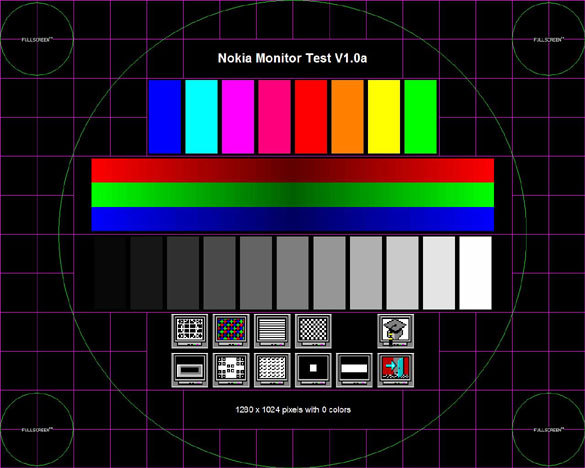17" LCD Part I: Six Sexy Panels
Testing
Testing was performed on a Dell machine (8100 size) with the following basic specs:
- Windows XP Professional
- Intel Pentium 4 at 1500 MHz
- 256 Mb RDRAM
- NVIDIA GeForce 2 Ultra with a DVI output and an analog output
The following procedure was used:
N-Test software was used for the following:
- to check the quality of the automatic phase and clock settings (using an analog connection)
- to adjust brightness and contrast
- Red, green, blue, and gray color patterns were displayed to evaluate how true the colors were and their scale.
- Settings were adjusted to display the maximum number of shades.
- The ranges of colors displayed were assessed.
- Internet Navigation and page-scrolling against a light and a dark background were checked with the aim of assessing how the screen behaved during rapid transition from light to dark and vice versa.
- Evaluation of ease of use in office applications and when moving about in documents (word-processing, spreadsheets).
- Behavior of the matrix after pressing a key or button.
- Checking that the automatic adjustment of the parameters on fixed or moving images works correctly.
Playback of video sequences were used to verify the following:
- absence of a trail or wake
- quality of low res images.
Fast and slow games (Dungeon Siege, Civilization III, Tropico, Quake III and derivatives) were used to determine:
- playability
- quality of lighting and detail
- visibility in dark corners
- interference of wake or trail for each screen
As for Dungeon Siege: the game only works best at 1024 x 768 pixels. This poses a problem with all the screens whose standard resolution is 1280 x 1024 pixels, and this includes the LCD 17" screens. All of them had to interpolate the image, and all offered a rather blurred image.
The brightness and contrast, and sometimes even the phasing and timing, had to be adjusted in order to make the darkest parts visible (if the input signal is analog). Then you had to return to Windows to check the compatibility of the new settings, if you were using them for office applications.
Get Tom's Hardware's best news and in-depth reviews, straight to your inbox.
Current page: Testing
Prev Page Expected Improvements This Year: Contrast And Pricing Next Page The Displays
